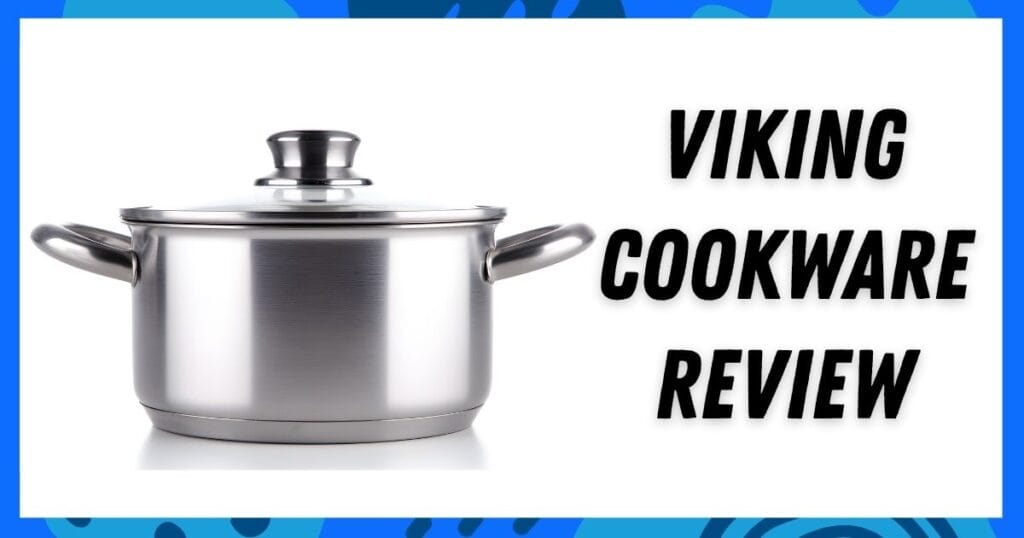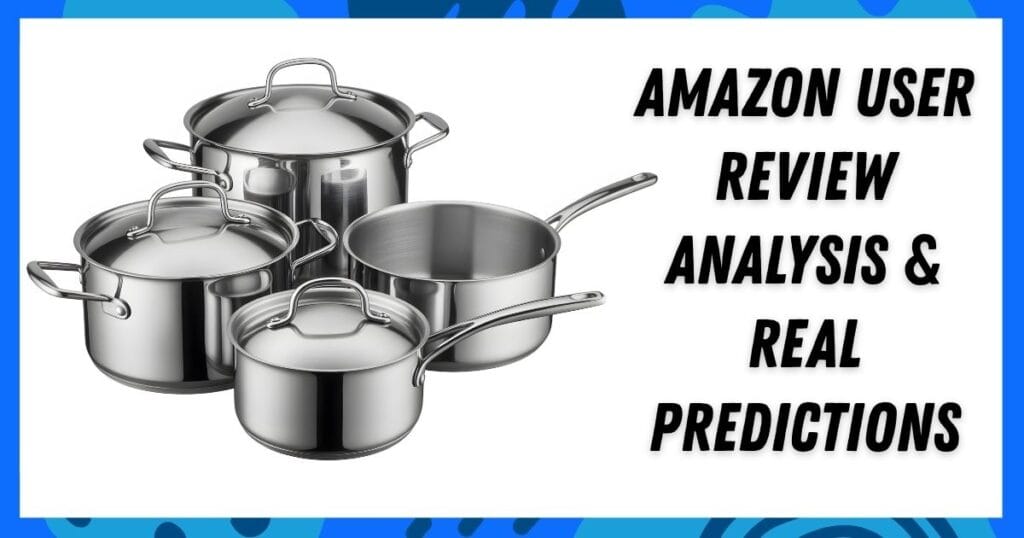Cookware plays a huge role in cooking – whether you are a professional chef or a weekend home cook. There are so many premium brands on the market, but is Viking cookware really worth it? Yes, then it is just a fancy brand name whose performance is not that strong? In a detailed Viking Cookware review, I’ll give you insights from the design, performance, advantages and disadvantages, and Amazon user feedback, so you can make confident decisions.

What You’ll Learn
- Viking ke alag-alag product lines aur unka construction
- Performance in real-world cooking
- Pros & Cons (with fairness)
- Amazon user reviews se ground truth
- Alternatives & buyer tips
- Final verdict: Should you buy or not?
1. Viking Cookware: Overview & Product Lines
1.1 Brand Background
Viking was originally known for kitchen appliances, but has now expanded into the cookware space as well. An analysis by Prudent Reviews shows that some lines are made in the US and some are made in China – From segmentation to quality and pricing both are different.
1.2 Major Lines & Construction Types
Commonly used products include:
- Professional 5-ply (highest grade)
- 3-ply / Contemporary
- Hard anodized / non-stick series
Example: Viking’s 3-layer stainless steel cookware set, which consists of 304 stainless steel interior + aluminum core + magnetic stainless steel exterior. A hard-anodized nonstick fry pan with 3 layers of nonstick coating is preserved in the oven up to about 500 ° F.
Whether the multi-layer construction itself decides how the cookware will distribute heat, how well it retains heat, etc.
2. Performance: Real Cooking Test Insights
It’s easy to claim “uniform heating,” but test data and user feedback tell the real picture.
2.1 Heating & Heat Retention
Prudent Reviews tested that Viking pans heat up quickly and evenly, but the heat isn’t as strong to hold – especially when you add cold ingredients.
The Rational Kitchen reported that the fried egg has a little sticky – Light in stainless steel cookware is something to look forward to.
= > The Insight: If you sleep, if you cook where the temperature can change, then the Viking can perform well. But for long periods of time, with constant heat (such as slow cooking), performance may seem a bit weak.
2.2 Usability, Handling & Cleanup
Pros:
The handle design in several pieces is comfortable and “staying cool.”
Some pieces are washable in the dishwasher.
Volume mark in deep pots in some models (metric + US)
Cons & caveats:
Long handles in some models make it difficult to balance on small pans.
Dirt can accumulate over time in the cracks of exposed rivets and logos.
The limits of the oven: Some lines in glass lids / some collections are limited to ~ 400 ° F.
2.3 Durability & Long-Term Issues
Feedback from users is mixed. Here’s what some users on Reddit said:
“Viking cookware doesn’t have any special credentials. It is simply an expensive range manufacturer taking advantage of its name. “
Some people are dissatisfied with parts breakage, handle problems, etc. Overall, the durability seems to be fine-tuned, but not exceptional compared to older brands.
Also, some lines are imported (made in China), so material control can be slightly variable.
3. Pros & Cons Summary
| Pros | Cons / Limitations |
| Attractive design, modern finish | Less heat retention compared to top-tier fully clad brands |
| Multiple lines at different price points | Some lines made in China — variable quality |
| Ergonomic handles, volume marks, induction compatibility in many pieces | Handles heavy / long in some models, balance issues |
| Dishwasher-safe in some models | Rivets / crevices trap grime, lids temperature limits |
| Good for general-purpose cooking | Not ideal for extreme heat tasks or long-duration slow cooking |
4. Amazon User Review Analysis & Real Predictions

I saw popular Viking cookware listings on Amazon – like 3-ply sets, nonstick pans, etc. Some notable observations:
- Overall High Rating: Many listings show 4 + stars with hundreds or thousands of reviews (for example, a 13-piece 3-ply set)
- Admiration of beauty and ordinary cooking: Users like the mirror-finish, sleek look, compatibility with induction.
- Criticism / Caution: some people refer to stains, discoloration after years; some non-stick coatings are damaged; The handles sometimes become loose or feel heavy.
- Non-Series: Good for eggs and pancakes in the beginning, but the long-term durability of the coating in nonstick lines is always a concern.
My Honest Predictions (based on aggregated data):
- For normal cooking up to 5-10 years you can expect reasonable performance – with careful use and maintenance.
- Non-stick lines: After a while, the coating will slightly deteriorate – especially if using strong heat or metal utensils.
- Thick stainless steel lines (5-layer, etc.) are likely to last longer, but will be more expensive.
- Like customer service, defects can be covered in the warranty, but breakdown problems can be the responsibility of the user.
5. How Viking Stacks Up Against Top Competitors
Comparisons are important because readers also compare:
Viking vs All-Clad: All-clad has a long-established reputation, continuous manufacture and proven durability. Prudent reviews say – if you can give money, then all-clad is a much safer bet.
Viking v. Made In, Heston, Demare: Brands like Made in India are strong in cost-efficiency and transparency.
The full value of money: Viking offers a number of levels – You can find mid-level models that give you a good profit in terms of money.
6. Buyer Tips & Optimization for Your Use
If you want to pick up any high-end cookware from Viking, these tips will help you:
- Let’s start small: Start with the set – a cauldron + saucepan, then spread it.
- Check the range of the oven and the lid: If baking / broiling, make sure the lid and cookware can handle the required temperature.
- Choose fully finished / 5-layer lines: If the budget allows – better heat stability and performance.
- Avoid metal utensils on non-stick: Use wood / silicone to protect the coating.
- Take care of maintenance and cleaning: Rub with light hands, avoiding sharp friction – especially in areas with rivets.
- Warranty and customer service: Keep receipts, register products – Can help with future claims.
Conclusion: Final Verdict
In short, Viking Cookware is a promising brand – Stylish design, good performance, many options and good reputation. But it’s not a great product… There are some limitations such as heat retention, durability of the coating, cleaning challenges, and consistency in quality (especially products manufactured abroad).
If I were to advise: If your budget is limited, go for Viking’s mid- to high-end line, but also compare with high-end competing brands. Use wisely, maintain well, and keep expectations realistic.
Q: Is Viking cookware safe for induction cooking?
Answer: Yes Many Viking models have magnetic stainless outer layers, which makes them induction-compatible.
Q: Can I use high heat for searing in Viking pans?
Answer: You need to be a little cautious. Normal stainless steel models can tolerate medium-high temperatures, but nonstick and glass-clad lines often have a range (400-500 ° F). At higher temperatures, the coating may deteriorate or the structure may deform.
Q: Is Viking cookware worth the price?
Answer: It depends on what line you buy, how you use it, and what competitive options you’re considering. If you want a mid-high quality cookware and are into careful use and maintenance, then yes it can be worthwhile. But if extreme durability and top-notch performance are desired, it would be wise to look at alternatives.
Q: Which Viking line is best?
Answer: For serious users, the professional 5-ply line is the best. But mid-level 3-ply / contemporary lines are a balanced choice for everyday cooks.

